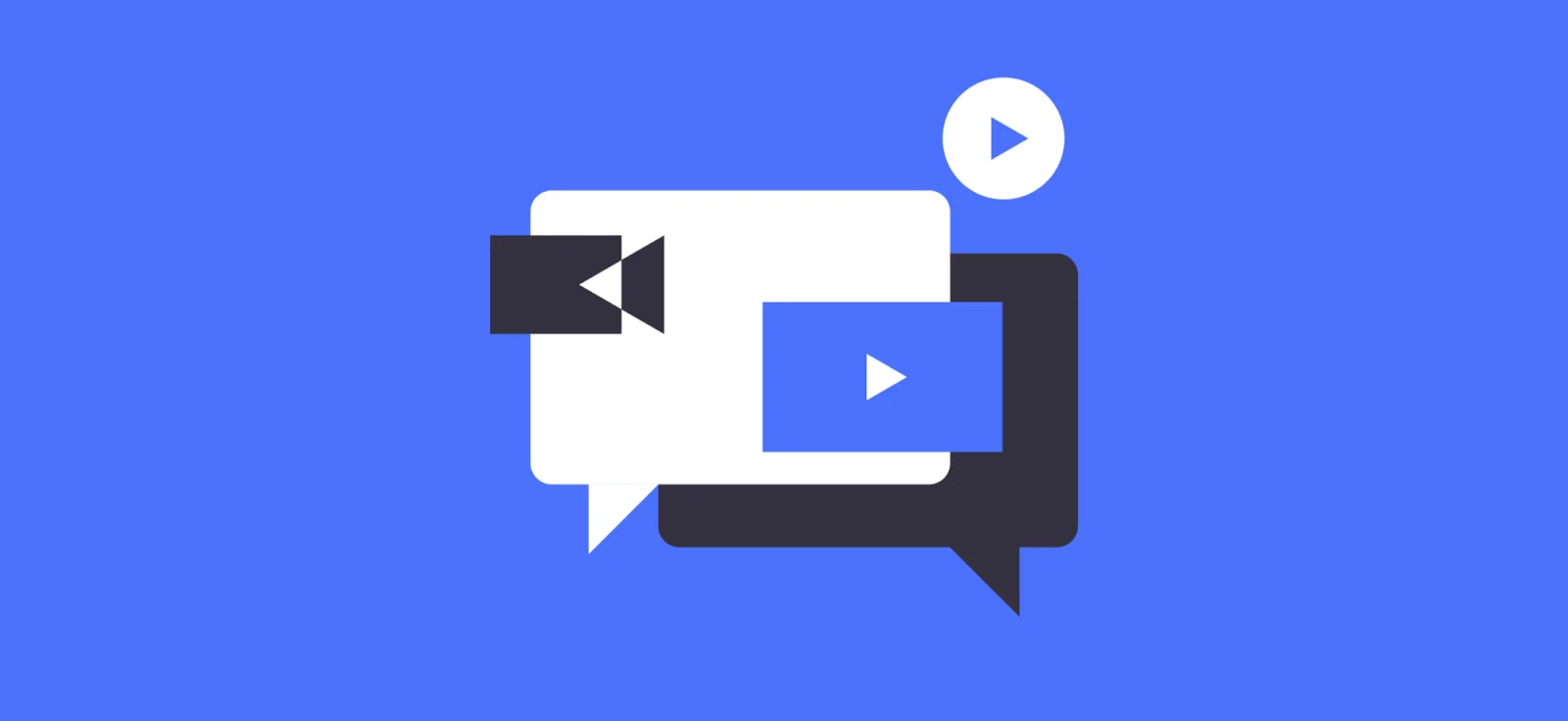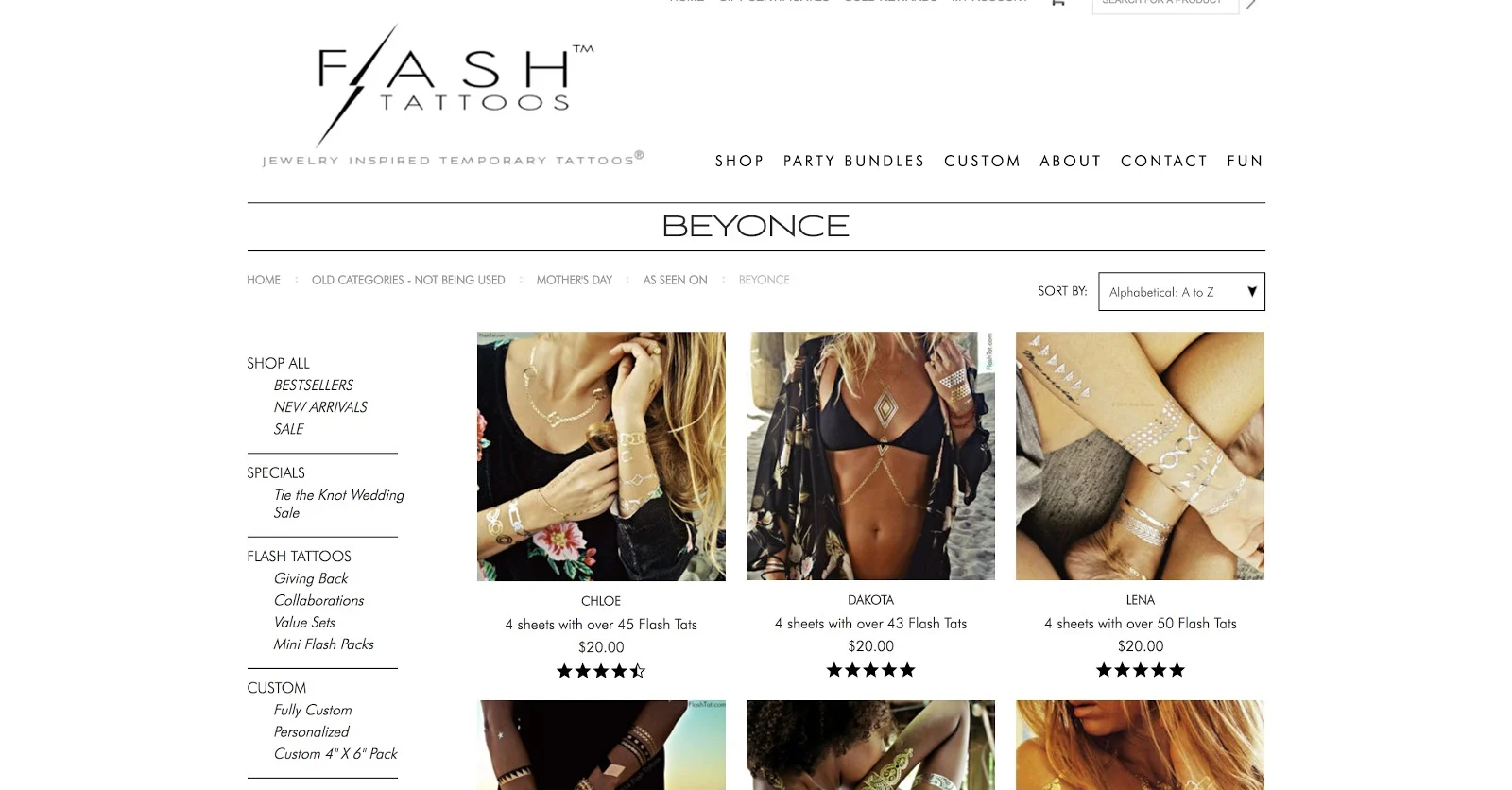The Power of YouTube Influencer Marketing: 2X Brand Awareness Plus Customer Trust & Sales — What’s Not To Love?

There’s a variety of influencer marketing tactics out there –– and many of them are highly effective.
Whether you are paying influencers to promote your product, or working to build yourself a community of ambassadors that take on the micro-influencer movement, influencer marketing can help you tackle every part of your sales funnel.
After all, influencer marketing is word-of-mouth marketing at scale.
People trust what influencers say and which products and brands they recommend. Their audiences are very engaged and finally accessible –– not sitting behind the Netflix paywall or browsing with the “help” of an adblocker.
And while influencer marketing of all shapes and colors can be beneficial for your brand, our team over at The Outloud Group, an influencer marketing agency that has created and executed campaigns for top ecommerce brands including 23andMe, LegalZoom, and GrubHub, has seen one platform above all others kill two birds (awareness and conversion) with one stone (or post).
Which is it? YouTube influencer marketing.
Here’s a complete breakdown of why YouTube influencer marketing is more effective than most other influencer marketing programs. We’ll also show you examples of exactly why this is and how it’s working for other brands across the web.
Influencer marketing vs. YouTube influencer marketing
An influencer campaign can fit into multiple categories of your marketing spend.
Interested in driving acquisition? Perfect. This is where discounts + influencer marketing can really help.
Looking to build awareness? Even better. This is where Instagram excels. TV advertising & YouTube are great for awareness, too. Lots of dollars are flowing into pre-roll.
Looking to do both? Now you’re really talking. This is where YouTube influencer marketing excels.
Depending on which part of the funnel you’re focused on, you’ll want to work with influencers on different platforms. Here’s a quick overview of some of the ones we’ve seen be most effective:
Snapchat influencers work well for building awareness and creating buzz around real-time events like product launches or products targeting young audiences (think gummy bears).
Instagram influencers make sense if you’re a particularly visual product or looking to build your following on social media, and can be especially effective when paired with Instagram ads.
Twitter is useful if you’re working to engage in broader conversations online.
YouTube is particularly special because it works well at every part of the funnel — offering both visual branding opportunity and attributable traffic to your site.
Of course, YouTube influencer marketing is very different than YouTube pre-roll marketing. It’s the difference between going to the driving range at a Jack Nicklaus-designed golf course and getting 1:1 coaching from the Golden Bear himself.
YouTube influencer marketing is great because it can both educate consumers about your brand and drive conversion in one fell swoop.

With the right guidance, YouTube influencers can create incredibly effective direct response ads that include a promo code or unique link to your site and drive their audiences to purchase.
These campaigns capitalize on all the branding work you’ve already done and push people across the finish line.
Often the influencer advocating for a product is enough to take someone from awareness to consideration to conversion, all in one step.
4 examples of YouTube influencer marketing done right
Using YouTube influencer campaigns for direct acquisition works well for mature brands and makes sense if you’ve nailed down your cost per acquisition and figured out what works for you on Adwords and Facebook.
Here are 4 brands YouTube influencer marketing has worked incredibly well for –– and what you can learn from their strategies.
Warby Parker’s YouTube Influencer Marketing Campaign
Warby Parker pioneered the home try-on model in the glasses industry.
Now, they use YouTube influencer marketing to explain that model. After all, buying a pair of glasses from Warby Parker is more involved than just clicking “add to cart”.
The lifestyle influencers Warby works with are easily able to share their experience with the brand in a way that feels natural, because so often they already share those types of details about their lives with their audience. Watch the influencer campaign below.
In this example, Stephanie is able to convey Warby Parker’s value in a visual and participatory way, and promotes their low-bridge frames to an audience who cares about Stephanie’s world-view and the products that are most helpful for her (and then likely, for them).
Let’s look at another brand example to really drive this home.
KiwiCo’s YouTube Influencer Marketing Campaign
KiwiCo partnered with Destin Sandlin of Smarter Every Day. The brand sponsored his adventure –– which if you haven’t, definitely watch! And, the brand was able to negotiate how much they paid for the sponsorship based on how many crates were bought.
Check it out (the KiwiCo part comes at the end).
Now, if the product you’re promoting is higher-consideration and you are primarily looking to bring customers into the top of your sales funnel, or just trying to get customers to look at you slightly differently than your competitor, dedicated content is a great addition to direct response ads.
Dedicated content is often described as branded content on sites like The New York Times and BuzzFeed (among many, many others), but YouTube has versions of this as well.
Let’s look at an example, of course.
Lowe’s YouTube Influencer Marketing Campaign
Here is a piece of branded content Lowe’s created with a YouTube influencer. Lowe’s sponsored the content and also paid for the set and production.
For doing so, they got high visibility on a video that received 5.5 million views, and got unique content of their own (in the form of behind-the-scenes content) for their own channels.
Even that behind-the-scenes video currently has more than 85,000 views.
23andMe’s YouTube Influencer Campaign
Another great example of dedicated YouTube content is this one with 23andMe and AsapSCIENCE.
In this example, 23andMe created a specific landing page for the show. You can easily do this by creating a web page on your ecommerce backend that uses the show’s handle as the URL. Here’s how you can do that in 5 minutes on BigCommerce.
OK –– now back to the 23andMe and AsapSCIENCE YouTube influencer marketing campaign. Check it out:
23andMe partnered with AsapSCIENCE to have hosts Mitch and Greg talk about their experience with the product as a way of advocating for the brand.
Of course, most influencer content drives both awareness and acquisition –– but it’s helpful to consider how your influencer campaign will fit into your attribution model.
With an average of seven touch points before conversion, being ready to retarget those who hear about your brand is also key.
A landing page like 23andMe’s is helpful in this way –– where you can retarget folks who land on it back to your site with additional offers to get them to convert.
Identifying and pitching YouTube influencers
Identifying YouTube influencers is a healthy mix of art and science.
There are obvious markers of a good influencer partner –– namely a general brand fit, strong presence with your target demographic, and a rate that doesn’t blow your budget out of the water.
The low-hanging fruit are often the influencers whose area of expertise is a direct overlap with your industry.
For an outdoor apparel company, it’s natural to partner with hunting, fishing, and camping influencers
For a scientific education company, it makes sense to partner with nerdy science types
But great work with YouTube influencers does not stop at strong demo and topical overlap. Some of the best successes come from brands working with influencers well known in adjacent markets.
Adjacent markets are often full of interested consumers who would benefit from being educated about a product by an influencer they trust.
Influencers in adjacent markets are tremendously successful at moving customers from consideration to acquisition.
One example of this is Wisecrack, an intellectual comedy show, advocating for LegalZoom. Let’s take a look:
Who maintains creative control? Hint: It’s not you.
Once you’ve picked the right influencers, the key to a successful partnership is to let influencers do what they do best –– which is not being a puppet for anything, especially your brand.
Don’t be overly prescriptive when it comes to letting them create. If the ad doesn’t sound, look, and feel natural, it won’t work. End of story.
You should be familiar enough with an influencer’s content to suggest a few concepts for how they might include your product in a video, but you should also trust that they know what their audience will respond to.
After all, they’re the ones who built their strong and loyal following.
YouTube influencers are your brand advocates, not your brand mouthpiece.
When you engage with YouTube influencers, successful companies remember that they are participating in an existing community that already has its own modes of interaction and norms. It is crucial that you treat creators and their audiences with respect. They have an audience for a reason, and they know what will work.
Approaching creators with that in mind will make all the difference.
Where to start when providing creative direction
Sharing 4-5 talking points is a good place to start, but what’s most important is being sure that the influencer is authentically excited about your brand.
Send them products, let them talk to the people who are the backbone of your business, pay them well on Youtube, and make sure they feel connected to your message.
Build a relationship. Ask what content they have planned in the coming months and how they think your product might be most naturally integrated.
Remember: you’re working with influencers, not using them.
How to avoid the 5 most common pitfalls
One of the most frequent pitfalls is using an influencer as a celebrity endorser.
Both influencers and celebrities can be powerful tools for developing brand associations and moving product, but they are fundamentally different.
An influencer’s sway depends on their relationship with their audience, not simply being well recognized and having “star-power.”
If you take creators out of context and community, you lose much of their value.
The point of working with influencers is gaining access to their unique relationship with their followers. If you use influencers like you would a celebrity, you miss out on delivering a message to the audience who will actually hear it.
This is the difference between inviting a YouTube influencer to play a part in your TV ad and asking them to create a dedicated video on their own channel.
Choose wisely and you’ll maximize your ROI.
Other key pitfalls include:
Requiring influencers to focus on too many talking points, which draws them away from an authentic endorsement
Requiring too many specific words or phrases from influencers
Having specific time limitations on length of the post
Focusing on product functions and features as opposed to how the product makes the life of the influencer better
7 ways to measure the success of your campaign
If it’s working, you’ll know.
Most obviously –– YouTube influencer marketing done right generates new customers and increases brand awareness.
What’s great about working on a platform like YouTube is that you’ll not only get the benefit of branding, but you’ll be able to track direct acquisitions thanks to a custom URL or promo code that’s easy to attribute…or at least the “final click” in the funnel is easy to attribute.
Let’s repeat that:
You’ll not only get the benefit of branding, but you’ll be able to track direct acquisitions thanks to a custom URL or promo code.
While we’re all ultimately selling something, not every campaign is structured with the goal of acquiring new customers directly.
To capture users who don’t buy immediately, successful influencer campaigns often focus on first leaving a positive impression through influencer advocacy and then creating an incentive for consumers to explore the website of the brand.
Co-branded (influencer + brand) landing pages are helpful in that they welcome an influencer’s audience to your site, opening up the possibility of re-targeting these consumers in the future.
For example, when Flash Tattoos did an influencer campaign with Beyoncé, they created a custom category page for the products. This page and link were given out to all the media that mentioned the partnership, including Vogue, Refinery29 and many, many more (as you can imagine).

Note that to be able to do this, you must be able to custom edit your category URL. This is not possible on all platforms, but does come out-of-the-box with BigCommerce on all plan levels. In other words, this is the difference between a URL that reads: www.flashtats.com/collections/beyonce and www.flashtats.com/beyonce. The second one is preferable.
Other metrics you can use to gauge your content’s effectiveness beyond conversion:
Video drop-off (i.e. what portion of the audience is actually watching the ad?)
Click-through rate: 1% CTR is pretty darn good
Increase in organic search traffic: YouTube increases search 2X compared to TV…and that’s not even factoring in the trust of influencers on YouTube
Acquisition cost on other platforms, e.g. Facebook, decreases
CPM / CPV: Aim to get <$25 CPM for your YouTube campaigns
Engagements: Look for influencers who drive likes, shares and comments
Final Word
While we’ve been evaluating influencers from the perspective of brands, it’s important to keep in mind that successful partnerships are a two-way street.
Influencers need to feel like they are benefitting significantly from association with your brand.
Let’s not forget that it’s the influencers who have cracked the code for developing a strong audience connection –– they know what works with this select group of people better than you do.
They have developed a personal brand that often spans across multiple platforms.
Influencers have earned the right to be particular about their channel and most have a high volume of offers from brand partners on the table at a given time.
So there you have it. Successful influencer marketing rests on your ability to make your relationships with influencers mutually beneficial and to empower the creators you work with to become your brand advocates.
There are a lot of bells and whistles you can add, but at the end of the day, authenticity is most important to any influencer campaign.
The Outloud Group’s Kay-Anne Reed contributed to this post.

Bradley is the Chief Growth Officer at The Outloud Group, an influencer marketing agency that helps brands tell their stories through influencers. A proven marketing innovator, Bradley is responsible for setting company strategy, building client relationships, and making new business models come to life. Previously, Bradley founded Grand Circus, a Google For Entrepreneurs Tech Hub and coding bootcamp in Detroit. Recognized as a part of the Detroit Techweek100. Mr. Hoos is a former management consultant that helped set the marketing strategy for leading organizations including Red Hat, Caterpillar, Accenture, Vertex Pharmaceuticals, and USAA. Bradley holds an MBA from The University of Chicago Booth School of Business and a BS and MS in Engineering from Michigan State University and the University of Iowa, respectively. Feel free to get in touch with Brad here: brad@outloudgroup.com.


